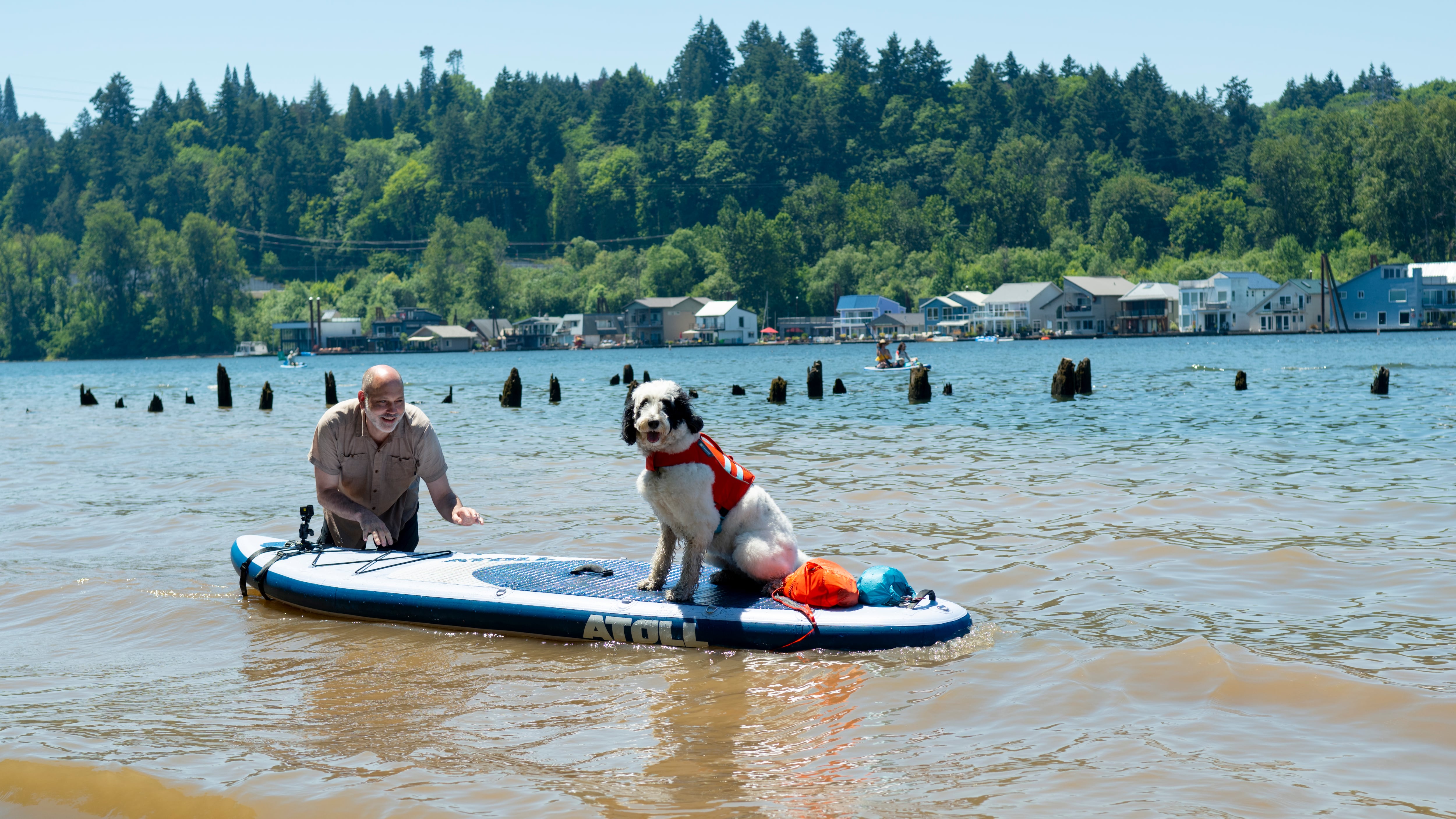As if heat waves weren’t already hard enough on pets, extreme heat has caused Portland’s largest body of water to become deadly to dogs.
Due to toxic algae blooms, local health officials are now warning Portlanders to keep their pets out of the Willamette River from Ross Island to the Sauvie Island Bridge, a 14-mile stretch that includes the majority of the city’s waterfront.
In recent lab tests, the Oregon Department of Environment Quality found levels of cyanotoxins that are harmful to pets, particularly dogs. The toxins aren’t yet at a level where they’re harmful to humans. But they are at a level where they can be lethal to dogs if ingested.
“There’s no clear end to when the blooms will go away, and they could last for weeks to months,” reads a release from Multnomah County. “Blooms develop in rivers when the water becomes slack and warm, and may last until weather and rains cool the water levels to a point where the blooms can no longer propagate.”
Multnomah County is advising that pet parents keep their dogs out of the water, in the advisory area, until further notice. If your pet does get in the water, don’t let them lick their fur, wash them with clean water and if they’re drooling, staggering, convulsing or vomiting, take them to the vet right away.
Harmful algae blooms can develop in any warm, slow moving body of water. The unusually warm weather makes the blue-green organisms more common.
“We would encourage pet owners to be vigilant no matter where they are,” Jay Levitre, a spokesperson for Multnomah County Animal Services, tells WW. “This is the type of year when it pops up.”
Though the blooms in the Willamette near Portland aren’t yet harmful to humans, the Oregon Health Authority has warned Oregonians statewide to be on the lookout for algae blooms, which could produce cyanobacteria. Not all algae is toxic, but it’s impossible to tell whether it is or not by looks alone.
“The guidance is just to be vigilant, even if you don’t have pets with you,” says Levitre. “You don’t always know if it’s toxic or not.”

